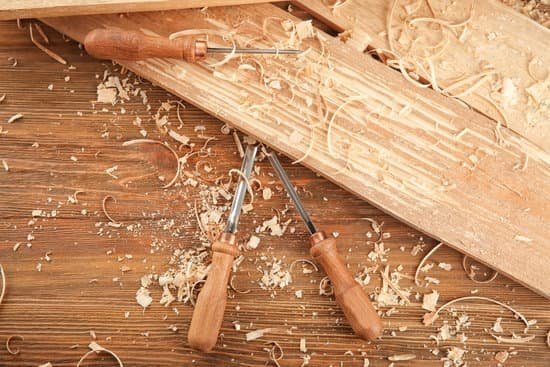If you’re looking to take your woodworking skills to the next level, understanding how to set up a woodworking router table is a crucial step. A router table provides greater precision and control for various woodworking tasks, making it an essential tool for any woodworker. In this article, we will guide you through the process of setting up a woodworking router table, from choosing the right table to adding accessories and observing safety precautions.
Before diving into the setup process, it’s important to grasp the significance of a router table in woodworking. This tool allows for more accurate and consistent cuts, as well as the ability to create intricate shapes and profiles on wood. Whether you’re a beginner or an experienced woodworker, incorporating a router table into your workshop can significantly expand your capabilities and enhance the quality of your projects.
In the following sections, we will cover everything you need to know about router tables, including how to select the right one for your needs, creating an optimal workspace for setup, mounting and calibrating the router, adding accessories for added functionality, and important safety precautions to keep in mind while using a woodworking router table. By the end of this guide, you’ll be ready to celebrate the completion of your setup and embark on new woodworking projects with confidence.
The Basics of Router Tables
When it comes to woodworking, a router table is an essential tool for creating precise, professional-looking cuts and designs. Before you dive into setting up your router table, it’s important to understand the basics of how these tables work and what you need to consider before getting started.
One key factor to consider is the size and stability of the router table. You’ll want a table that can accommodate the size of your projects, while also providing a stable work surface. Additionally, you’ll need to think about the type of router you plan to use with the table, as this will impact the compatibility and setup process.
Another important aspect to consider is the type of fence system that comes with the router table. A good fence is essential for making accurate cuts and guiding your workpiece smoothly through the cutting process. Some tables come with adjustable fences, which can be incredibly beneficial for versatile woodworking projects.
Lastly, you’ll want to think about any additional accessories or features that may be important for your specific woodworking needs. This could include things like dust collection systems, miter gauges, or featherboards. Taking these factors into account before setting up your router table will ensure that you have everything you need for successful woodworking projects.
Now that we’ve covered some key considerations for setting up a woodworking router table, let’s dive into the step-by-step process of actually getting everything in place and ready to go. In the next section, we’ll provide a detailed guide on how to install your router onto the table and get everything adjusted for precision and safety.
Choosing the Right Router Table
When it comes to setting up a woodworking router table, one of the most crucial decisions you’ll have to make is choosing the right table for your needs. There are several factors to consider in this process, and taking the time to make an informed decision will greatly impact the efficiency and quality of your woodworking projects.
Table Size and Material
The first thing to consider when choosing a router table is the size and material. The size of the table should be proportional to the space you have available in your workshop, as well as the size of the projects you typically work on.
Additionally, consider the material of the table – while cast iron tables are durable and provide stability, they can be heavy and expensive. On the other hand, aluminum tables are lightweight and affordable, but may not be as sturdy.
Fence Quality and Adjustability
Another important factor to consider is the quality and adjustability of the fence. The fence plays a crucial role in ensuring straight and accurate cuts, so it’s essential to choose a router table with a high-quality fence that can be easily adjusted for different woodworking tasks.
Dust Collection System
Finally, don’t overlook the importance of a dust collection system when choosing a router table. Woodworking can create a significant amount of sawdust, so having an effective dust collection system will not only keep your workspace clean but also protect your health. Look for a router table that includes or allows for easy attachment of a dust collection system.
By considering these factors when choosing a router table, you’ll be able to set up a workspace that meets your specific needs and enhances your woodworking capabilities. Now that you understand what to look for in a router table, let’s move on to how to properly set up your workspace for optimal use.
Setting Up Your Workspace
Choosing the Right Location
Before setting up your woodworking router table, it’s important to consider the location where you will be working. Choose a well-lit and spacious area that allows for easy maneuverability around the table. Keep in mind that the router table should be positioned in a way that provides ample space for feeding materials through without any obstructions.
Organizing Your Tools and Materials
In order to create an ideal workspace for your router table, it’s essential to organize your tools and materials effectively. Consider installing shelves or cabinets near the router table to store all necessary accessories, such as bits, wrenches, and safety equipment. This will help keep your work area neat and ensure that you have everything you need within arm’s reach.
Dust Collection and Ventilation
As woodworking can produce a significant amount of dust and debris, it’s crucial to have adequate dust collection and ventilation in place when setting up your router table. Consider investing in a dust collection system or a shop vacuum to keep the work area clean and maintain good air quality. Additionally, ensure that there is proper airflow in the workspace to prevent overheating while operating the router table.
By carefully considering these factors when setting up your woodworking router table, you can create an ideal workspace that promotes efficiency and safety. Taking the time to prepare your environment before beginning this project will ultimately contribute to a more enjoyable woodworking experience.
Installing the Router
Mounting the router on the table is a crucial step in setting up your woodworking router table. Start by adjusting the router’s base plate to fit it into the router table opening. Then, place the router into position and secure it with screws or clamps. Ensure that it is centered and level to avoid any issues during operation.
Next, you’ll need to adjust the router bit height. Loosen the collet nut and insert the router bit into the collet, making sure it is fully inserted. Then, tighten the collet nut securely using a wrench. Adjust the height of the bit according to your project requirements using the micro-adjustment features on your router table.
Finally, make sure that all safety features are properly installed before turning on your woodworking router table. This includes installing a fence for added stability and precision in your cuts. Always remember to wear proper safety gear such as goggles and ear protection when operating power tools.
| Aspect | Detail |
|---|---|
| Router Base Plate Adjustment | Ensure it fits into the router table opening |
| Router Bit Height Adjustment | Proper insertion and height adjustment for project requirements |
| Safety Features Installation | Fence installation for stability and precision; Wearing proper safety gear |
Adjusting the Router
Calibrating the router for precision and safety is an essential step in setting up your woodworking router table. Proper calibration ensures that your cuts are accurate and that you can use your router table safely. In this section, we will discuss the steps involved in calibrating your router for optimum performance.
To begin calibrating your router, start by making sure that the router bit is installed correctly and securely. Use a wrench to tighten the bit in place, ensuring that it is straight and not wobbling. Once the bit is properly secured, adjust the height of the bit according to the depth of cut you want to achieve. Most router tables have a built-in measurement system that allows you to make precise adjustments.
Next, you’ll need to check the fence alignment. The fence should be parallel to the miter slot on the tabletop to ensure straight and accurate cuts. Use a straight edge or a square to verify that the fence is aligned correctly. If it’s not, make adjustments as needed until it is perfectly parallel.
Finally, before using your router table for any woodworking projects, take the time to test the accuracy of your adjustments on a scrap piece of wood. This will allow you to make any final tweaks before working on your actual project. Always wear eye and ear protection when operating a woodworking router table, and follow all safety precautions recommended by the manufacturer.
| Step | Description |
|---|---|
| 1 | Install and secure the router bit |
| 2 | Adjust the height of the router bit according to desired depth of cut |
| 3 | Check and align the fence parallel to miter slot on tabletop |
| 4 | Test accuracy of adjustments on scrap wood before starting project |
Adding Accessories
When it comes to woodworking, having the right accessories for your router table can make a significant difference in the quality and efficiency of your projects. Here are some essential accessories that you should consider adding to your setup:
- Router Bits: Investing in a variety of high-quality router bits will allow you to create different profiles and cuts. From straight bits to chamfer bits, having a collection of router bits on hand will give you more flexibility in your woodworking projects.
- Fence System: A fence system is crucial for guiding your workpieces and ensuring straight and accurate cuts. Look for a quality fence system that is adjustable and easy to use.
- Router Lift: A router lift makes it easier to adjust the height of your router bit from above the table, eliminating the need to reach underneath the table for adjustments. This can save time and improve precision when making changes to your routing depth.
In addition to these essential accessories, there are many other add-ons available for router tables, such as featherboards, dust collection systems, and safety switches. By carefully selecting and incorporating these accessories into your setup, you can maximize the functionality of your router table and elevate the quality of your woodworking projects.
If you’re unsure about how to set up these accessories with your router table, refer to the manufacturer’s instructions or seek guidance from experienced woodworkers. With the right accessories in place, you’ll be well-equipped to take on a wide range of woodworking tasks with confidence and precision.
Remember that safety should always be a top priority when using any woodworking tools and accessories. Familiarize yourself with proper usage guidelines for each accessory and always follow best practices for safe operation.
By adding the right accessories to your router table setup, you’ll be ready to tackle new challenges and expand your woodworking capabilities. Whether you’re a beginner or an experienced woodworker, having a well-equipped router table will enhance your craftsmanship and open up new creative possibilities in your projects.
Safety Precautions
When it comes to using a woodworking router table, safety should always be a top priority. Here are some essential tips to keep in mind when utilizing this powerful tool:
1. Wear protective gear: Before you even start working with a router table, make sure you have the right equipment for personal protection. This includes safety glasses to protect your eyes from flying debris, hearing protection to guard against loud noise, and appropriate clothing to shield your body from wood particles.
2. Keep your workspace organized: A cluttered workspace can increase the risk of accidents, so it’s crucial to keep things tidy and organized. Clear away any unnecessary tools or materials from the table and floor, ensuring that you have enough space to work comfortably.
3. Use push blocks and featherboards: When feeding wood through the router, it’s important to use push blocks and featherboards to maintain control over the material. These tools help prevent kickback and ensure a smooth, steady feed through the router, ultimately reducing the risk of injury.
By following these safety precautions, you can create a safe and secure environment for using a woodworking router table. Remember that proper safety measures should always be prioritized when working with power tools.
Conclusion
In conclusion, setting up a woodworking router table is an essential step in creating a functional and efficient workspace for your woodworking projects. By understanding the importance of a router table, learning the basics, and choosing the right equipment, you have taken the first steps towards enhancing your woodworking experience.
Once you have selected and installed the router on your table, it is important to take the time to calibrate and adjust it for precision and safety. This will ensure that your projects are executed with accuracy and that you can work with confidence. Additionally, adding accessories to your router table can further enhance its functionality, allowing you to expand your woodworking capabilities.
As you celebrate the completion of your setup, it is important to keep in mind the safety precautions associated with using a woodworking router table. By following essential tips and guidelines, you can protect yourself from potential hazards and enjoy working with your new equipment in a secure manner.
Looking ahead to future projects, you now have a solid foundation for creating beautiful and professional wood pieces. Whether you are a seasoned woodworker or just starting out, setting up a woodworking router table is an investment that will elevate your craftsmanship to new heights.
Frequently Asked Questions
How Do You Set Up a Router Table for Beginners?
Setting up a router table for beginners involves carefully assembling the table and fence, installing the router, and adjusting the height of the bit. It’s important to follow the manufacturer’s instructions and use all safety equipment.
What Not to Do on a Router Table?
When using a router table, it’s crucial not to make any adjustments or changes while the router is still running. Additionally, never attempt to freehand cut on a router table as it can lead to serious injury. Always use push blocks or guides for safety.
What Is the Feed Direction for a Router Table?
The feed direction for a router table is essential to ensure safe and accurate cutting. The general rule is to feed your workpiece from right to left when working on the infeed side of the fence. This direction helps maintain control and minimizes kickback from the bit.

Hi everyone! I’m a woodworker and blogger, and this is my woodworking blog. In my blog, I share tips and tricks for woodworkers of all skill levels, as well as project ideas that you can try yourself.





